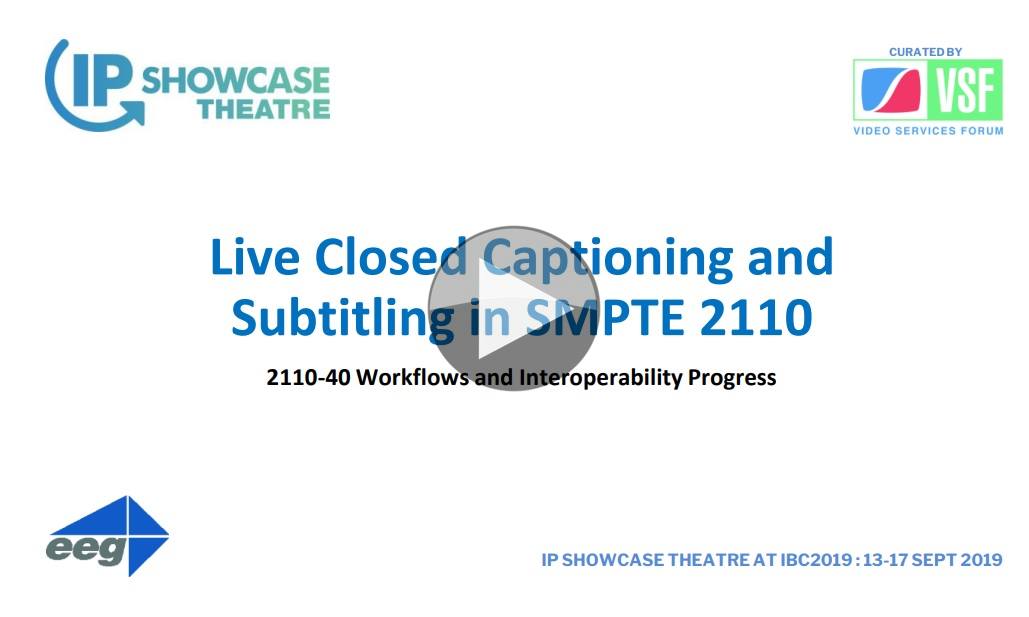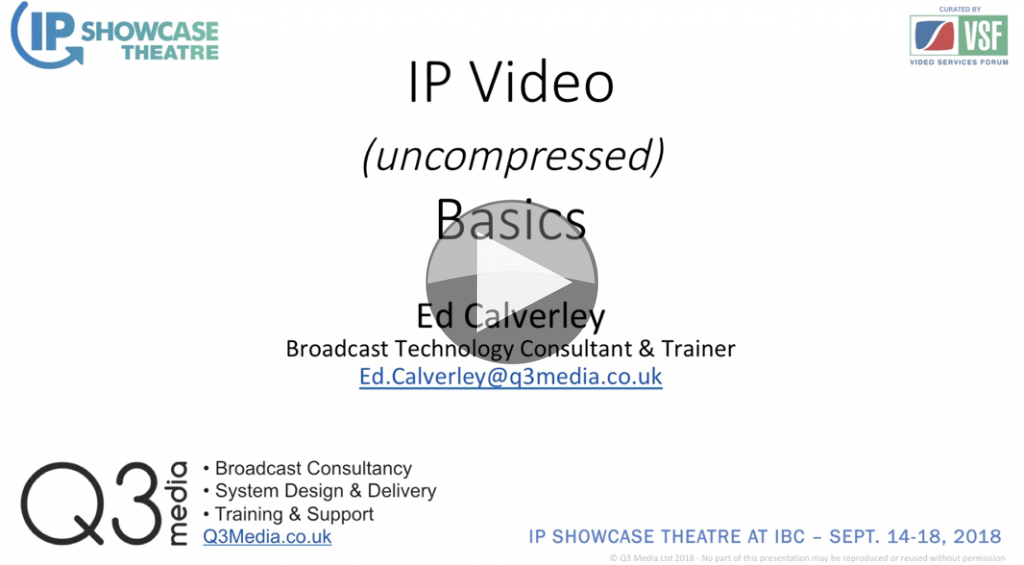The SMPTE ST 2110-40 standard specifies the real-time, RTP transport of SMPTE ST 291-1 Ancillary Data packets. It allows creation of IP essence flows carrying the VANC data familiar to us from SDI (like AFD, closed captions or ad triggering), complementing the existing video and audio portions of the SMPTE ST 2110 suite.
This presentation, by Bill McLaughlin from EEG, is an updated tutorial on subtitling, closed captioning, and other ancillary data workflows using the ST 2110-40 standard. Topics include synchronization, merging of data from different sources and standards conversion.
Building on Bill’s previous presentation at the IP Showcase), this talk at NAB 2019 demonstrates a big increase in the number of vendors supporting ST 2110-40 standard. Previously a generic packet analyser like Wireshark with dissector was recommended for troubleshooting IP ancillary data. But now most leading multiviewer / analyser products can display captioning, subtitling and timecode from 2110-40 streams. At the recent “JT-NM Tested Program” event 29 products passed 2110-40 Reception Validation. Moreover, 27 products passed 2110-40 Transmitter Validation which mean that their output can be reconstructed into SDI video signals with appropriate timing and then decoded correctly.
Bill points out that ST 2110-40 is not really a new standard at this point, it only defines how to carry ancillary data from the traditional payloads over IP. Special care needs to be taken when different VANC data packets are concatenated in the IP domain. A lot of existing devices are simple ST 2110-40 receivers which would require a kind of VANC funnel to create a combined stream of all the relevant ancillary data, making sure that line numbers and packet types don’t conflict, especially when signals need to be converted back to SDI.
There is a new ST 2110-41 standard being developed for additional ancilary data which do not match up with ancillary data standardised in ST 291-1. Another idea discussed is to move away from SDI VANC data format and use a TTML track (Timed Text Markup Language – textual information associated with timing information) to carry ancillary information.
Speakers
 |
Bill McLaughlin VP of Product Development EEG |




